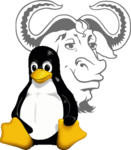Kororaa XGL LiveCD



 Distrowatch reported, "The Kororaa project has released a live CD demonstrating the new Xgl technology for 3D window manipulation and other unusual effects: "Today I am happy to release a Kororaa live CD showcasing Xgl technology. If you would like to find out what it's all about, then download the CD and boot up your PC! The Live CD comes with X.Org 7.0, GNOME 2.12.2, 3D support and of course Xgl. Supported drivers are 'nvidia' (NVIDIA) and 'fglrx' (ATI). Minimum recommended configuration is Pentium 3 with NVIDIA GeForce video card."" So, of course we downloaded it and checked it out.
Distrowatch reported, "The Kororaa project has released a live CD demonstrating the new Xgl technology for 3D window manipulation and other unusual effects: "Today I am happy to release a Kororaa live CD showcasing Xgl technology. If you would like to find out what it's all about, then download the CD and boot up your PC! The Live CD comes with X.Org 7.0, GNOME 2.12.2, 3D support and of course Xgl. Supported drivers are 'nvidia' (NVIDIA) and 'fglrx' (ATI). Minimum recommended configuration is Pentium 3 with NVIDIA GeForce video card."" So, of course we downloaded it and checked it out.
This was my first chance at playing with XGL technology since I wasn't successful in setting it up in SUSE, I passed on the Ubuntu offering, and have been way too chicken to start messing up my everyday gentoo workstation. So, I was quite anxious to get the Kororaa XGL LiveCD downloaded and booted. I ended up having to resort to bittorrent, but surprizingly, contrary to the usual, it came it rather quickly here. I suppose that's an indication of the interest in this new LiveCD.
I booted it up and was immediately impressed with the lovely boot splash. But the best was yet to come. We briefly saw the pretty login screen, but since autologin was enabled, it just went on by and a nice dressed up gnome-looking desktop appeared. At first glance it appears to be your normal gnome desktop except for the menu effects. The menus kinda fade in and out as they roll out and back. The beautiful color scheme is immediately obvious as well as the really tasteful wallpaper.



But right there sitting on desktop is a file that lets you know there's more in store. Double-click on the Key Shortcuts file and a whole new world is opened up. As you can see, some of the effects available are rotating the desktops in a cube, shaking, stretching or warping the windows when moving, easy on-the-fly window transparency adjustments, keyboard shortcut for switching windows from a visual representation, and my favorite was resizing all the windows to line them up so all was visible on the desktop.






It's only a 442mb download, but it comes with quite a few applications. Firefox 1.5.0.1, gaim, totem, lots of cd rippers, players, and burners, gimp, and a bunch of system tools and games are at the ready. The only problems encountered here were that the cd player was misconfigured for my system and totem crashed when trying to play an mpg file. Other than that all functioned really well and the whole system was stable. Under the hood is kernel 2.6.14-r6, gcc 3.4.5, and Xorg 7.0.



In conclusion, I just had a blast here playing with Kororaa XGL Livecd. It booted with no trouble and had no problems starting X even with two monitors plugged into the nvidia card. The system was responsive and stable. It worked wonderfully. My only complaint is there isn't a harddrive installer!
UPDATE: Version 0.2 - The Harddrive Install.
-

- Login or register to post comments
 Printer-friendly version
Printer-friendly version- 162239 reads
 PDF version
PDF version
More in Tux Machines
- Highlights
- Front Page
- Latest Headlines
- Archive
- Recent comments
- All-Time Popular Stories
- Hot Topics
- New Members
digiKam 7.7.0 is released
After three months of active maintenance and another bug triage, the digiKam team is proud to present version 7.7.0 of its open source digital photo manager. See below the list of most important features coming with this release.
|
Dilution and Misuse of the "Linux" Brand
|
Samsung, Red Hat to Work on Linux Drivers for Future Tech
The metaverse is expected to uproot system design as we know it, and Samsung is one of many hardware vendors re-imagining data center infrastructure in preparation for a parallel 3D world.
Samsung is working on new memory technologies that provide faster bandwidth inside hardware for data to travel between CPUs, storage and other computing resources. The company also announced it was partnering with Red Hat to ensure these technologies have Linux compatibility.
|
today's howtos
|









.svg_.png)
 Content (where original) is available under CC-BY-SA, copyrighted by original author/s.
Content (where original) is available under CC-BY-SA, copyrighted by original author/s.

Impressive (yet not interested)
It looks impressive!
However, I'm not interested in neither XGL nor other "Looking Glasses" or whatever 3D-stuff are they making up out there.
I might been obsolete, but even for a desktop user, an OS shouldn't be *that* disruptive. After the initial amazement, how many REAL LIFE USERS will find this kinda "all-translucent", "3D-triptych" etc. desktop as _productive_?
If this is the way Linux is trying to thwart Vista, then... this is a wrong way! (sorry, Novell, it's just I don't believe in eye-candiness as a main purpose).